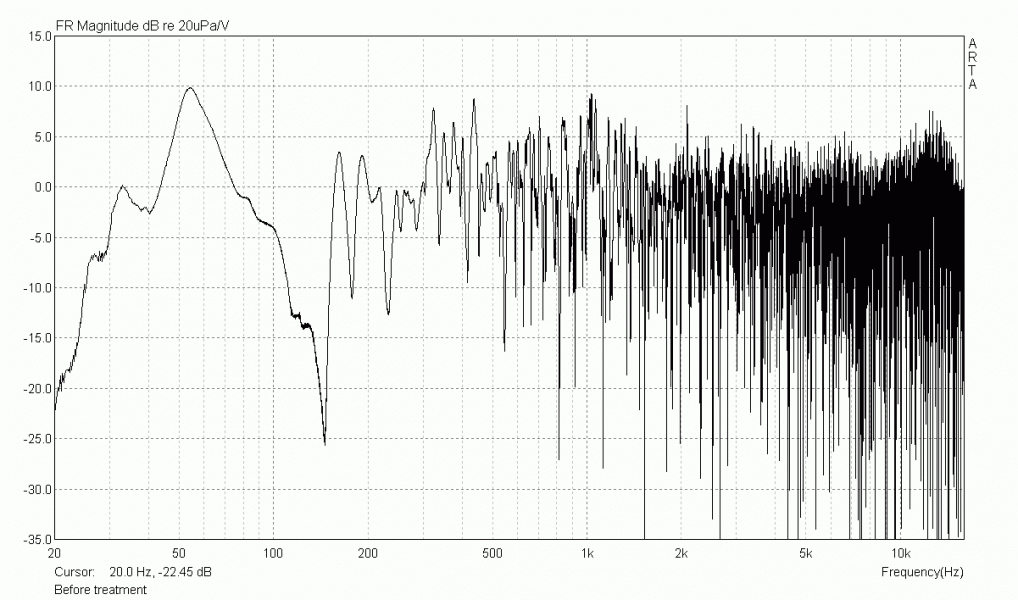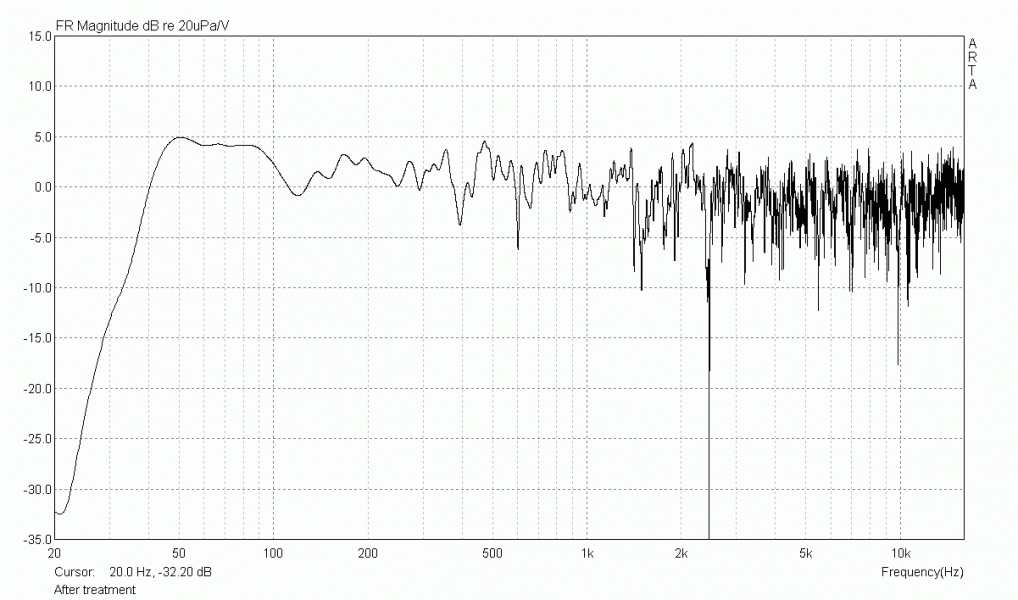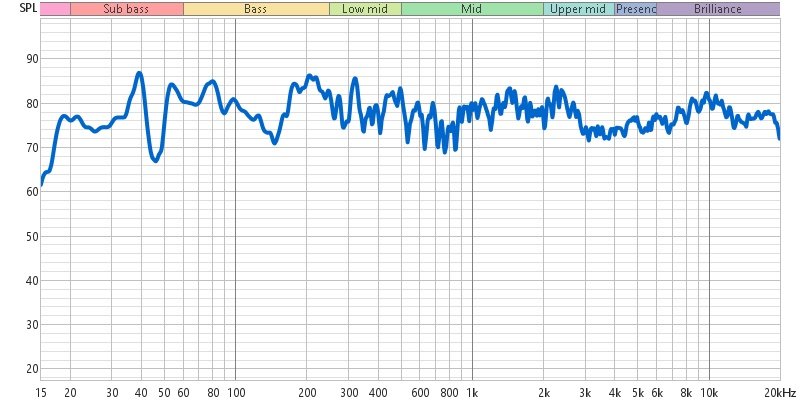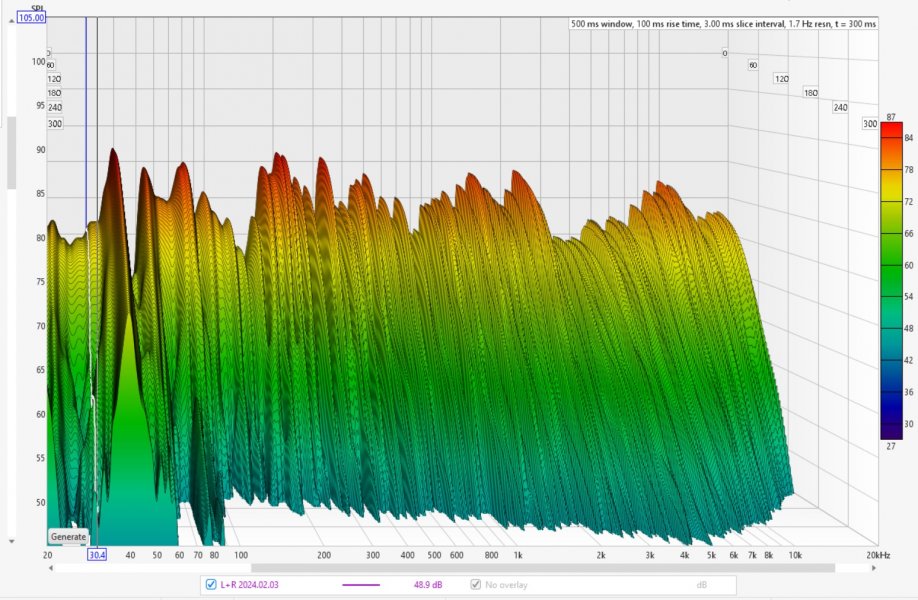I also personally find it satisfying to adjust the room and get positive results. I'm not into using computers. Its not my thing. And the best rooms I have heard have no DSP outside subs. So no one is going to convince me I am lacking something If I don't embrace it. Its not needed. But for those that like computers and tools, It seems to be a fine tool for aound shaping.
Does DSP belong in State of the Art Systems?
- Thread starter musicfirst1
- Start date
You are using an out of date browser. It may not display this or other websites correctly.
You should upgrade or use an alternative browser.
You should upgrade or use an alternative browser.
I am not pro or con DSP. I don't know what it's impact really is. As in, can I hear it. I definitely heard rhe DEQX. Very audible digital sound. But I'm digressig from my point. I made a room change. I closed a wall with a barn door. It was a punch in the face reality for me how important room treatments are. I had a large amount of first reflection issues. A absorber cleaned a lot up. My point being, I always resisted DSP to some extent as I figured you have to deal with the room first. Otherwise your fighting obstacles DSP can not overcome. It may become frustratingly difficult to use DSP if your constantly chasing structural room issues that need pysical room correction. Issues such as reflactionsand echo. If the room is as ideal as possible, then maybe DSP can do fine tuning.
Absolutely - agree 100%, though perhaps your last sentence could read "If the room is as ideal as possible and speakers carefully chosen and set up, then DSP shouldn't be necessary".
Care must be taken to not confuse a Double Bass Array with a Distributed Bass Array. Since you use both terms in your post, its hard to know what it was that was being measured. If you talk to Duke of Audiokinesis, he recommends working with the phase of some of the subs so as to optimize response in the space. If you didn't do that, its hard to know if these measurements really mean anything.The drawback with something like double bass array
SBIR (Speaker Boundary Interference Response) as I understand it is another way of saying 'room boundary effect'. Its not an approach, its a phenomena. So what is the approach to which you refer?SBIR is a better approach here
Yes and no because it depends what’s causing the bass null at the seating position.Bjorn, if you can answer in a very simplistic sense, is the approach addressing a bass null like this to find the point in the room with the corresponding multiple of that null frequency, where there is excess energy, and use the right trap in that location?
If the problem is that you’re simply sitting at a room node, there is a significant limit to what treatment can do for that bass null. The solution has to be to move the seating position.
But if the bass null is because of SBIR or say your room is asymmetric and the direct sound is being cancelled by a reflected out of phase sound after it bounced around the walls, you can then absorb the excess energy where the sound is bouncing off the wall to reduce the null. But it’s not that you can just put the bass absorber anywhere where there is a bass peak at that frequency. You need to be judicious about the likelihood that the location of the bass peak is actually creating an out of phase cancellation at your listening position.
I'm sure that's true, but my reluctance to use DSP room correction, even for small adjustments as you suggest, is because (with a full-range amp system), the ENTIRE frequency range has to pass the DSP - there is no "bypass for higher frequencies" - and it's a signal processor that I don't want any more than other signal processing such as tone controls. I prefer not to process my incoming signal any more than is absolutely necessary.
I can understand your disappointment with using DSP but its unclear to me what the signal chain looked like in your system while playing with DSP? This is in reference to your mentioning that there is no "Bypass" for Higher Freqs?
If you are talking about using a Turn Table as the Source then you are also talking about doing an A/D conversion prior to any DSP taking place. If that were the case, then I would be curious to know what kind of A/D converter was being used to make that change from A to D? Was it something "Hi-End" ? What are its specs? Could it be a contributing factor to your less than favorable view of using DSP?
Its also unclear to me if your experience with using DSP was via a box with "Baked In" DSP or if you have actually used any of the latest SOA DSP options, created the filters, took the measurements..etc? If you have tasted both options, you still walk away unimpressed?
With the "Good" DSP, you can absolutely Bypass (ie..not touch) the High Freq's if that is what you want to do. The skies the limit if your willing to put in the time to get there.
We cant base all DSP off of how some box used some "Auto Function" or equivalent to dial in some room and then it not offering any clues of what exactly it did.
Were not talking about Disco Mode or Stadium Mode here are we?
It's normally called DBA (double bass array) and multiple subwoofer approach or multiple subwoofers. The latter was first introduced by Welti and later by Ear Geddes and others. Both of them have the weakness of not addressing mid and upper bass and which we are more sensitive to then the sub frequencies.Care must be taken to not confuse a Double Bass Array with a Distributed Bass Array. Since you use both terms in your post, its hard to know what it was that was being measured. If you talk to Duke of Audiokinesis, he recommends working with the phase of some of the subs so as to optimize response in the space. If you didn't do that, its hard to know if these measurements really mean anything.
Another weakness of multiple subwoofers is that when subwoofer(s) are placed in the rear of the room and they all work in the same frequency range there's a loss of slam, punchiness and the physical impact. Probably because they are working against each other. I have set up multiple subwoofers myself FIY. It didn't work as well as treatment but I understand that treatment isn't for everyone.
I meant SBA, as in single bass array. That's what you linked to. It uses a complete absorptive rear wall, so it includes acoustical treatment. It works very well.SBIR (Speaker Boundary Interference Response) as I understand it is another way of saying 'room boundary effect'. Its not an approach, its a phenomena. So what is the approach to which you refer?
This is incorrect. It's aboslutely possible to treat room nodes/bass nulls. But treatment needs to be sufficiently efffective. A lot of sold commercial products out there aren't, and for very low frequencies surface area is very important.If the problem is that you’re simply sitting at a room node, there is a significant limit to what treatment can do for that bass null. The solution has to be to move the seating position.
I have shown several examples already where rome nodes and antinodes have been treated. Here's another example.
Before and after treatment.


No analogue in my system, so no ADC to mess things up!I can understand your disappointment with using DSP but its unclear to me what the signal chain looked like in your system while playing with DSP? This is in reference to your mentioning that there is no "Bypass" for Higher Freqs?
Its also unclear to me if your experience with using DSP was via a box with "Baked In" DSP or if you have actually used any of the latest SOA DSP options, created the filters, took the measurements..etc? If you have tasted both options, you still walk away unimpressed?
With the "Good" DSP, you can absolutely Bypass (ie..not touch) the High Freq's if that is what you want to do. The skies the limit if your willing to put in the time to get there.
By "no bypass" I'm referring to full-range amps that include a DSP intended to correct for room anomalies. They can't do this of course - all they can do is mess the nice flat response the amp is designed so carefully to deliver! However, as the signal is a full frequency range one, the entire signal has to encounter the DSP if its engaged, as there is no way that the bass is separated out leaving the rest to bypass the filter and be reunited after the DSP for amplification. In active systems with 2 or more amps (bass amp with DSP, others without), this can be achieved, but not with a single amp.
I've used Dirac Live, RoomPerfect and MARS and all these adjust only the bass, but of course the entire range has to encounter the filter. This for my ears (and multiple visitors) is the problem as some of the "tingle factor" that exciting music generates is diminished if the filter is engaged. As it happens, my speakers have their own built-in bass amps with a form of DSP built in so I can keep the top and mid free of DSP, while the bass can be adjusted.
Those three work really well for movies and general home theater use (particularly for improving dialog intelligibility and soundscape/staging), but are not at the level of Acourate (or AudioLens) and similar approaches for ultra high end audio use cases. For just one example, most of the off the shelf consumer-focused technologies resample internally to 48k, whereas Acourate (and other SOTA) create filters specific to each sampling rate.I've used Dirac Live, RoomPerfect and MARS and all these adjust only the bass, but of course the entire range has to encounter the filter. This for my ears (and multiple visitors) is the problem as some of the "tingle factor" that exciting music generates is diminished if the filter is engaged.
I have a good friend with a BACCH. He had the new DSP feature installed and setup today.
His perception using a BACCH, which I mention as its a type of DSP, he says he doesn't hear it when in bypass or active. He does have a digital based system. But the idea of losses from sending the signal through additional connections and processes doesn't seem to impact the sound..
Second, this person has done a lot of room tuning. Even to the extent of placing braces under the floor to stiffen it. Its a good room and well tuned system. He said with the new DSP its way more refined. The sweeps are there to see the changes. He was shocked too that its one sweep and done. Not near the level of fiddling in past DSP he tried.
His perception using a BACCH, which I mention as its a type of DSP, he says he doesn't hear it when in bypass or active. He does have a digital based system. But the idea of losses from sending the signal through additional connections and processes doesn't seem to impact the sound..
Second, this person has done a lot of room tuning. Even to the extent of placing braces under the floor to stiffen it. Its a good room and well tuned system. He said with the new DSP its way more refined. The sweeps are there to see the changes. He was shocked too that its one sweep and done. Not near the level of fiddling in past DSP he tried.
Here is an interesting line from my friend who just installed BACCH DSP.
I will acknowledge that I'm probably crossing over into not organic, which I could understand if somebody's taste would catch that moving forward. I would have to decide which imperfections I actually like. I think the key when refining everything will be a healthy balance between imperfections in every Day, listening, and perfect by the book sound. hopefully that makes sense.
I will acknowledge that I'm probably crossing over into not organic, which I could understand if somebody's taste would catch that moving forward. I would have to decide which imperfections I actually like. I think the key when refining everything will be a healthy balance between imperfections in every Day, listening, and perfect by the book sound. hopefully that makes sense.
Why then would you use both Distributed Bass Array and Double Bass Array in the same post?? Dr Geddes and Dr. Toole seem to prefer the word "distributed" FWIW. I see a difference here, which you don't? Or am I misinterpreting something?It's normally called DBA (double bass array) and multiple subwoofer approach or multiple subwoofers. The latter was first introduced by Welti and later by Ear Geddes and others. Both of them have the weakness of not addressing mid and upper bass and which we are more sensitive to then the sub frequencies.
Another weakness of multiple subwoofers is that when subwoofer(s) are placed in the rear of the room and they all work in the same frequency range there's a loss of slam, punchiness and the physical impact. Probably because they are working against each other. I have set up multiple subwoofers myself FIY. It didn't work as well as treatment but I understand that treatment isn't for everyone.
I meant SBA, as in single bass array. That's what you linked to. It uses a complete absorptive rear wall, so it includes acoustical treatment. It works very well.
I can attest to the fact that your second paragraph doesn't tell the whole story and isn't a universal experience. It might help if you play recordings that you recorded yourself, so you know how the recording is supposed to sound. That is exactly what I do and its been a very useful reference tool.
The dreaded dip at 140-150 (and at 45). I have corrected most of this in my listening room. Still not perfect (thus why I am reading/educating myself about dsp options).This is incorrect. It's aboslutely possible to treat room nodes/bass nulls. But treatment needs to be sufficiently efffective. A lot of sold commercial products out there aren't, and for very low frequencies surface area is very important.
I have shown several examples already where rome nodes and antinodes have been treated. Here's another example.
Before and after treatment.
View attachment 125250
View attachment 125251

Am I the only one impressed by this?This is incorrect. It's aboslutely possible to treat room nodes/bass nulls. But treatment needs to be sufficiently efffective. A lot of sold commercial products out there aren't, and for very low frequencies surface area is very important.
I have shown several examples already where rome nodes and antinodes have been treated. Here's another example.
Before and after treatment.
View attachment 125250
View attachment 125251
Sometimes you have to accept that you can’t always get things to be perfect. The frequency response looks pretty good even without DSP. I’ve seen DSP responses that look worse.The dreaded dip at 140-150 (and at 45). I have corrected most of this in my listening room. Still not perfect (thus why I am reading/educating myself about dsp options).
View attachment 125298
To me, the first thing to explore is the waterfall plot (or RT60). That’ll probably give you more ideas of what you need to treat.
Sometimes you have to accept that you can’t always get things to be perfect. The frequency response looks pretty good even without DSP. I’ve seen DSP responses that look worse.
To me, the first thing to explore is the waterfall plot (or RT60). That’ll probably give you more ideas of what you need to treat.

I honestly cannot understand this one.
Is your chair approx 750 mm from rear wall ..The dreaded dip at 140-150 (and at 45). I have corrected most of this in my listening room. Still not perfect (thus why I am reading/educating myself about dsp options).
View attachment 125298
390cm from front wall (behind speakers) and 445cm from back wall (behind my ears). Room is 11'high x 14' wide and approx. 27' deepIs your chair approx 750 mm from rear wall ..
Pretty decent room !390cm from front wall (behind speakers) and 445cm from back wall (behind my ears). Room is 11'high x 14' wide and approx. 27' deep
I have 130hz dip and part of it is wall behind chair.. 750mm from wall .. I can open the door and reduce the depth of the dip. The rest is from a multitude of reflections which obviously sum to that dip. I can dsp it out.. almost.. at listening spot but it's not really noticeable one way or the other
I do intend to investigate further .. my room is 4.4 x 7.2 x 3 but speakers are on long wall hence sitting close to wall
Looks like neither of your walls generate the dip but not a bad plot in any case
Phil
Similar threads
- Replies
- 95
- Views
- 15K
- Replies
- 208
- Views
- 45K
- Replies
- 3
- Views
- 2K
| Steve Williams Site Founder | Site Owner | Administrator | Ron Resnick Site Owner | Administrator | Julian (The Fixer) Website Build | Marketing Managersing |






